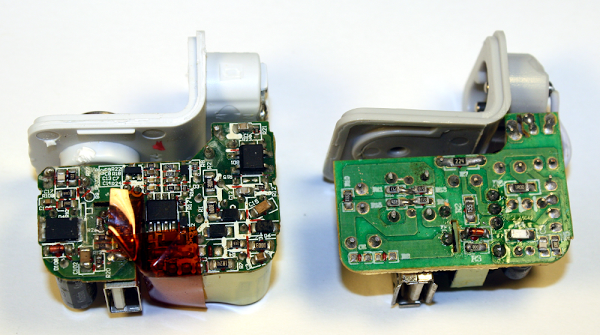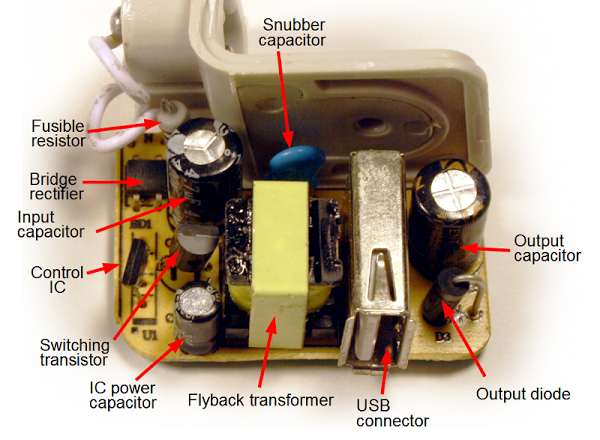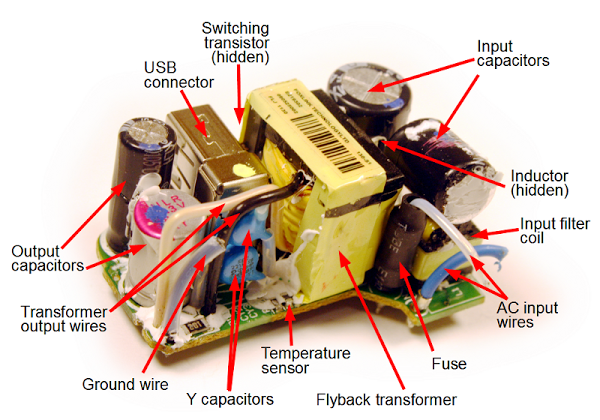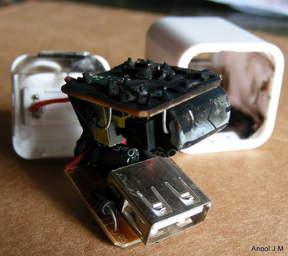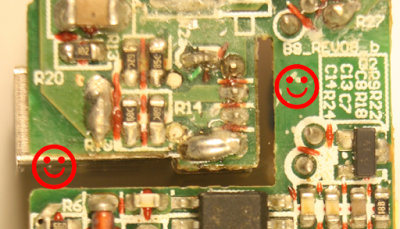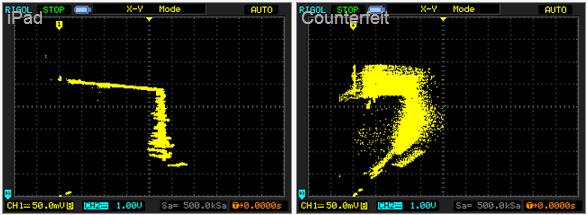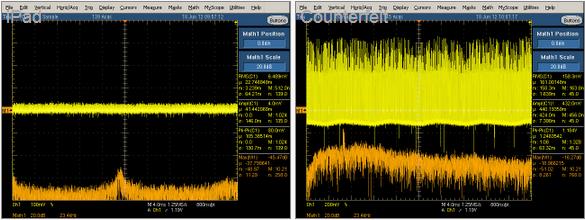Inside Apple's Charger And A Risky Counterfeit: Why You Should Care For Originality
Apple is often criticized for selling its chargers at a high profit margin, especially when you can easily find an incredibly cheap version on eBay. Well, it turns out there’s a reason these counterfeiters can make such cheap chargers.
When it comes to the outside looks, An Apple power adapter and a counterfeit one, both looks identical
But an engineer investigating the differences between genuine and counterfeit iPad chargers found that despite the identical looks, there were big differences internally, impacting on both power delivery and safety
Ken Shirriff has done a great job of comparing a counterfeit iPad power adapter to a genuine Apple adapter over at his blog. The teardown revealed that most of the time, the counterfeit chargers are a 5 watt charger instead of a 10, are poorly constructed, and have major safety issues.
iclarified.comIf you look very closely, you can spot are a few differences in the text: The counterfeit removed "Designed by Apple in California. Assembled in China" and the manufacturer "Foxlink", probably for legal reasons. (But strangely, the counterfeit still says "TM and © 2010 Apple Inc.") The counterfeit charger displays a bunch of certifications (such as UL) that it doesn't actually have, writes Ken Shirriff.
For example, Apple's power adapter is crammed full of bigger, higher quality components while the counterfeit has low-quality components and more space
The components inside a real iPad charger (left) and a counterfeit charger (right).
Image via googleusercontent.comOpening up the chargers reveals big differences between them. The genuine charger on the left is crammed full of components, fitting as much as possible into the case. The counterfeit charger on the right is much simpler with fewer components and much more empty space.
The Apple charger uses larger, higher-quality components (in particular the capacitors and the transformer); below you will see that these have a big effect on power quality and safety.
Shirriff, in a detailed teardown on his blog, writes that, among others, one safety difference is obvious:
"the Apple charger has much more insulation. The upper (high-voltage) half is wrapped in yellow insulating tape. Some components are encased in shrink tubing, there are plastic insulators between some components, and some wires have extra insulation. The counterfeit charger only has minimal insulation."
The build quality of the Apple charger is much higher. In the counterfeit charger, some components are visibly crooked or askew. While this doesn't affect the circuit electrically, it indicates a lack of care in construction.
Flipping the boards over reveals another obvious safety difference: Apple's charger includes red insulating tape while the counterfeit does not.
The circuit board of a real iPad charger (left) and a counterfeit charger (right).
Image via googleusercontent.comFlipping the boards over reveals that the circuitry of the genuine Apple charger is much more complex than the counterfeit. The Apple board is crammed with tiny surface-mounted components in every available spot. The counterfeit board has a lot of empty space, with just a few components.
One not-so-obvious difference is the space between high and low voltage currents running through the boards. While Apple's charger includes a safe 4mm separation between the two, the counterfeit only features a 0.6mm separation. Shirriff notes this means a simple drop of condensation could cause the charger to zap the user.
How both the chargers work:
Both the real and counterfeit chargers use similar flyback switching power supply circuits. The principle of a switching power supply is the power is switched on and off tens of thousands of times a second, allowing it to provide the exact amount of power required with very little power wasted as heat. In addition, the high frequencies allow the charger to use a small transformer, unlike the bulky transformers used for 60 Hz AC.
Shirriff writes that since the counterfeit charger is much simpler, it is easier to understand how it works. He explains it in reference to the picture below:
The AC power enters through the white wires in the upper left. It passes through a fusible resistor, which acts as a safety fuse. Below this, the bridge rectifier contains four diodes which convert the AC into DC (at about 170 to 340 volts). The input capacitor smooths out this power. The 4-pin control IC monitors the charger and uses the switching transistor to turn the high-voltage DC on and off 41,000 times per second. This chopped DC is fed into the primary winding of the flyback transformer.
The transformer converts this to the desired high-current 5 volts. The output diode produces DC, and the output capacitor smooths it out. Finally, the output voltage is available at the USB connector to power your iPad. A few components round out the circuit. A feedback winding on the transformer provides voltage feedback to the control IC. This winding also powers the IC; the IC power capacitor smooths out this power. Finally, the blue snubber capacitor absorbs current spikes when the transistor is switched off.
The genuine iPad charger operates on similar principles, although the circuit is more advanced, writes Shirriff
The AC input is on the lower right, and goes through a 2A fuse (in black insulation for safety). The primary has much more filtering than in the counterfeit charger with a filter coil (common mode choke), inductor, and two large electrolytic capacitors. This increases the cost, but improves the power quality.
On the output side (left), the charger has two filter capacitors, including a high-quality aluminum polymer capacitor (with the magenta stripe). The Y capacitors help reduce interference. The tiny NTC temperature sensor lets the charger shut down if it overheats.
Shirriff goes into far greater detail with extensive images and graphs detailing the specific differences between Apple's real iPad charger and the counterfeit
The circuit board inside a genuine iPad charger showing the components.
Image via googleusercontent.comOn the other side of the circuit board, things get complicated in the Apple charger. Starting with the AC input in the upper right, the charger includes additional input filters as well as spark gaps. The latch release circuit lets the charger reset quickly from faults. The control IC provides advanced control of the charger under varying conditions. (This IC is much more complex than the control IC in the counterfeit charger.)
The current sense resistor lets the IC monitor the current through the transformer and the line voltage resistors let the IC monitor the input voltage (as well as initially powering-up the IC). The protection circuit uses the temperature sensor on the other side of the board to shut down if there is an over-voltage or over-temperature problem. The secondary side includes some special features for power quality. The Y-capacitor filter works with the Y capacitors to filter out noise. The output filter circuitry is more complex than in the counterfeit. Note that the real charger has a ground connection, unlike the counterfeit charger which has a plastic pin here.
Safety probably isn't something you think about when you plug in your charger, but it's important, writes Shirriff
Inside the charger is 170 volts or more with very little separating it from your iPad and you. If something goes wrong, the charger can burn up, injure you, or even kill you. Devices such as chargers have strict safety standards - if you get a charger from a reputable manufacturer. If you buy a cheap counterfeit charger, these safety standards are ignored.
The UL regulations require safe separation between the high voltage and the low voltage. This is measured by creepage - the distance between them along the circuit board, and clearance - the distance between them through air. The regulations are complex, but in general there should be at least 4mm between high-voltage circuitry and low-voltage circuitry.
The iPad charger provides safe creepage and clearance distances between the primary high-voltage side (bottom) and secondary low-voltage side (top).
Image via googleusercontent.comThe image above shows how the genuine iPad charger's circuit board separates the high voltage (bottom) from the low voltage (top). The happy face on the right marks an empty region that provides a safety gap between the primary and secondary. (This is a contrast with the rest of the circuit board, which is crammed full of components.) This gap of 5.6mm provides a comfortable safety margin. The happy face on the left marks a slot in the board that separates the low voltage and high voltage.
The creepage distance on the counterfeit charger board below is scary - only 0.6 mm separation between low and high voltage. The sad face on the right shows where a low-voltage trace is nearly touching the high-voltage trace below. (The ruler on the right indicates millimeters.) The board isn't as bad as it could be: the happy face on the left marks a slot cut in the circuit board under the transformer to increase the creepage distance. But overall, this board is unsafe. If you use the charger in a humid bathroom and a drop of water condenses across the 0.6 mm gap, then zap!
Shirriff further writes that the real charger provides much more power with much less noise
Lab measurements of the output from the chargers shows a couple problems with the counterfeit. First, the counterfeit turns out to provide at most 5.9W, not 10W. Second, the output voltage is extremely noisy and full of spikes.
The following voltage-vs-current graphs show the performance of the iPad charger (left) and counterfeit charger (right) under increasing load:
The line for the real charger goes much farther to the right, showing that the real charger provides much more current. By my measurements, the real charger provides a maximum of 10.1 watts, while the counterfeit charger provides only 5.9 watts. The consequence is the real charger will charge your iPad almost twice as fast. The other thing to note is the line for the Apple charger is smooth and thin, while the counterfeit charger's line is all over the place. This indicates that the power provided by the counterfeit charger is noisy and low quality.
This next pair of graphs shows the power quality. The yellow line shows the voltage:
The real charger has a stable yellow thin line, while the counterfeit charger's output has large voltage spikes. The bottom of the counterfeit charger's yellow line is wavy, due to 120 Hz ripple appearing in the output voltage.
The orange line shows the frequency spectrum of the output: lower is better, and higher is exponentially worse. The counterfeit spectrum is much higher in general, with a large spike at the switching frequency. This shows that the counterfeit charger's power is worse across the frequency spectrum.


